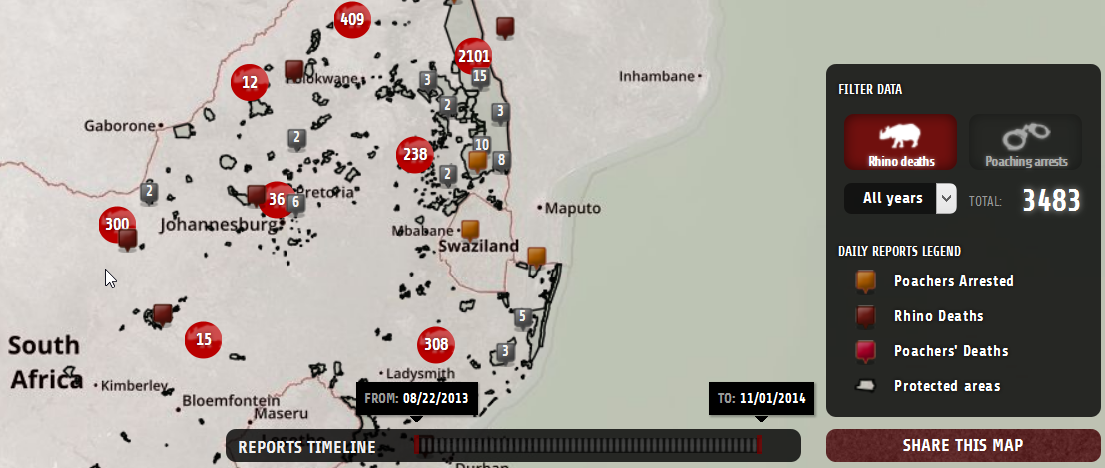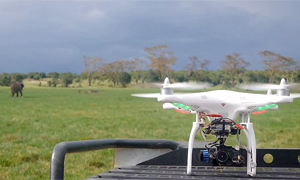Venturing into e-learning for journalists? 7 questions to ask before you do

Photo: DPA
E-learning is a major educational trend and can enhance vocational training for media professionals, too. But there are several questions you need to ask yourself before going ahead and setting up e-learning modules.
Journalist and journalism training expert Werner Eggert has successfully experimented with new e-learning tools and implemented blended-learning courses for media professionals for years. He shares his knowledge with onMedia.
![]() read more
read more
Fostering freedom of expression with digital technologies – a manifesto for the Global South
 Digital innovators from 16 different countries have created and signed a manifesto for using digital technologies to foster freedom of expression in the Global South.
Digital innovators from 16 different countries have created and signed a manifesto for using digital technologies to foster freedom of expression in the Global South.
Called the South2South Manifesto, the document contains seven guiding principles as well as concrete, practical recommendations.
![]() read more
read more
A new media model worth watching – The Conversation
![]()
The Conversation is a popular Australian online news site that uses academics to cover breaking news and analyze current debates. The idea behind the model is to team up university researchers, who know a lot about many things but can’t necessarily write for a mainstream audience, with editors, who can. The combination of “academic rigour with journalistic flair” (the site’s slogan) has proved a roaring success and The Conversation now attracts nearly 20 million reads a month.
Largely funded by partner universities, the articles are free to read, there are no limits to the number of articles people can read and there is no advertising. In an interesting twist, articles are also free to republish under a Creative Commons license. And in an era where news organizations are continually slashing budgets and laying off staff, the not-for-profit has managed to export its model beyond Australia’s shores to the United Kingdom and the United States.
OnMedia spoke with The Conversation’s founder, Andrew Jaspan.
![]() read more
read more
Online comments are being shut down
 One by one, news sites are changing how they deal with reader comments below online articles. Some are choosing to shut down online comments completely. Others have assigned members of staff the task of strictly moderating comments left by readers, and deleting ones deemed inappropriate. And some have begun outsourcing comments all together to social media sites like Facebook.
One by one, news sites are changing how they deal with reader comments below online articles. Some are choosing to shut down online comments completely. Others have assigned members of staff the task of strictly moderating comments left by readers, and deleting ones deemed inappropriate. And some have begun outsourcing comments all together to social media sites like Facebook.
But hang on, don’t editors appreciate reader participation anymore? Well, it seems they do, but they’re tired of combatting racist and sexist comments, vulgar allusions and off-topic discussions that don’t offer any insight or value to other readers (or so they say).
![]() read more
read more
Journalist Rhitu Chatterjee at work in India
 Rhitu Chatterjee grew up in India and trained as a journalist in the USA where she worked for ten years for media outlets including NPR and Public Radio International (PRI). She now lives in New Delhi, and she continues to report for PRI’s programme The World, as well as for Science magazine.
Rhitu Chatterjee grew up in India and trained as a journalist in the USA where she worked for ten years for media outlets including NPR and Public Radio International (PRI). She now lives in New Delhi, and she continues to report for PRI’s programme The World, as well as for Science magazine.
![]() read more
read more
Crucial questions when using digital technology in media and transparency projects

Oxpeckers.org uses digital technology to map rhino deaths in southern Africa
There are some amazing media and advocacy projects that digital technology. But for every success story, there are dozens of others that are just not working or are simply muddling along. OnMedia has put together thirteen important questions you need to consider before starting up any new digital technology initiative.
![]() read more
read more
Telling the news using animation
 Cartoons and comics have been part of popular culture for decades. So why not use them to report stories? Taiwan-based Next Media Animation is exactly doing that. The news service produces animated shorts that are sometimes bizarre, sometimes gruesome and sometimes serious. But their news recipe has proved astonishingly successful. onMedia’s Marcus Bösch takes a look at what could be the future of news.
Cartoons and comics have been part of popular culture for decades. So why not use them to report stories? Taiwan-based Next Media Animation is exactly doing that. The news service produces animated shorts that are sometimes bizarre, sometimes gruesome and sometimes serious. But their news recipe has proved astonishingly successful. onMedia’s Marcus Bösch takes a look at what could be the future of news.
![]() read more
read more
12 tips to using digital technology for media and advocacy

African SkyCAM drone
The South2South Media Dialogue recently brought together 14 amazing journalists and activists from Latin America, Asia, the Middle East and Africa who are all working in the trenches – creating new tools and new ways of using technology to increase people’s freedom of information and expression. Their experiences range from mapping Rhino poaching deaths in southern Africa and using the crowd to open up data in Argentina to providing audio news on mobiles in India, conducting investigative journalism in Peru and starting up Palestine’s first hyperlocal news site.
At the four-day event in Cape Town, they talked about their own initiatives and shared many of the pitfalls and possibilities of implementing and running projects which use digital technology. So here’s your chance to learn from them.
![]() read more
read more
People who innovate: Alchemiya founder Navid Akhtar
 Media tends to focus on bad news. This is especially true when it comes to Islam and the Muslim world. But in London, a new media startup sets out to change this. Alchemiya, a new video-on-demand platform, will work like Netflix with a catch: it plans to showcase content about Muslim life aimed at urban Muslims. Its founder, British journalist and documentary producer Navid Akhtar, spoke with onMedia’s Jannis Hagmann about how he grew tired of reporting on extremism and what he has learned from his own media project development.
Media tends to focus on bad news. This is especially true when it comes to Islam and the Muslim world. But in London, a new media startup sets out to change this. Alchemiya, a new video-on-demand platform, will work like Netflix with a catch: it plans to showcase content about Muslim life aimed at urban Muslims. Its founder, British journalist and documentary producer Navid Akhtar, spoke with onMedia’s Jannis Hagmann about how he grew tired of reporting on extremism and what he has learned from his own media project development.
![]() read more
read more
Beeping horns and barking dogs: how to record audio in noisy places

In some countries and cultures, it’s very hard to find or create quiet places to record interviews. The vibrant street life may be so noisy that it’s audible from inside buildings, or the extreme climate may cause sounds such as pelting rain or creaking roofs expanding in the sun.
Outside, everything from barking dogs to street hawkers and blaring music can mean it’s impossible to find a quiet corner. As a journalist, you’ll need to work around this – after all, it’s not possible to ask hundreds of motorists to stop tooting!
OnMedia’s Lesley Branagan has tips to help you get good clean audio that will edit up nicely, no matter what the situation.
![]() read more
read more







